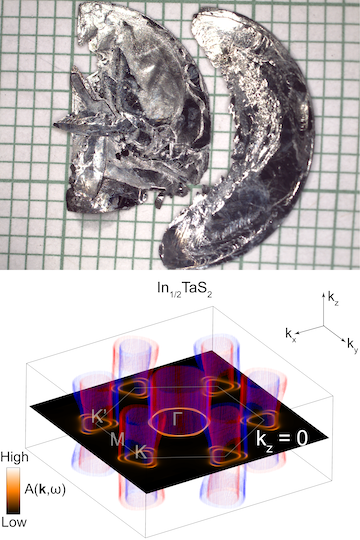Reviewed by Lexie CornerMay 30 2025
A research team led by Rice University physicists Ming Yi and Emilia Morosan has developed a material with electronic properties that could support the design of more energy-efficient electronic devices.

Image Credit: Rice University.
The material, known as a Kramers nodal line metal, was created by introducing a small amount of indium into a layered compound of tantalum and sulfur. The addition of indium changes the crystal structure’s symmetry, enabling the physical characteristics associated with Kramers nodal line behavior.
The study contributes to ongoing research aimed at reducing energy loss in electronic systems and exploring more sustainable materials for future technologies.
Our work provides a clear path for discovering and designing new quantum materials with desirable properties for future electronics.
Ming Yi, Associate Professor, Physics and Astronomy, Rice University
Creating a New Material
The researchers found that introducing small amounts of indium into tantalum disulfide (TaS₂) altered the material’s crystal symmetry. This modification produced a distinct pattern in which electrons with opposite spins travel along different paths in momentum space - an effect that continues until the paths meet at what is known as the Kramers nodal line.
The material also exhibited zero-resistance electrical conduction, indicating superconducting behavior. This combination of properties suggests potential for applications in developing topological superconductors, which may be useful in improving power systems and computing technologies.
.
Designing a material to meet the stringent symmetry conditions necessary for these special properties was challenging, but the outcomes have been rewarding.
Emilia Morosan, Professor, Physics and Astronomy, Rice University
To optimize these features, the team experimented with different compositions. They used advanced techniques - including spin-resolved angle-resolved photoemission spectroscopy and electrical transport measurements in magnetic fields - to study the material’s microscopic properties. These methods allowed them to examine the energy, velocity, and spin of the electrons responsible for electrical conduction.
Our experiments indicate that we can precisely adjust the material’s properties to accentuate its topological traits, which is vital for future applications.
Yichen Zhang, Study Co-First Author and Doctoral Student, Rice University
The Findings
To support the accuracy of their findings, the researchers combined experimental results with detailed first-principles theoretical calculations. These computational models confirmed the experimental observations and provided additional insights into the material’s electronic structure.
Junichiro Kono, director of the Smalley-Curl Institute and a co-author of the study, noted that the work by Yi and Morosan’s team contributes to a deeper understanding of quantum materials and may inform the development of low-energy electronic technologies through the study of Kramers nodal line metals.
Junichiro Kono, Director, Smalley-Curl Institute, added, “This groundbreaking work exemplifies the spirit of innovation that defines the Smalley-Curl Institute. It advances our mission to foster cross-disciplinary collaboration across many fields, bringing together physics, materials science and engineering to explore new quantum behaviors in matter.”
The researchers emphasized that this discovery is an early step in a broader effort to explore the properties of these materials, with the goal of identifying further characteristics that could support future scientific and technological applications.
“There is still much to explore, and we are excited about the future possibilities that this new material presents,” said Yuxiang Gao, a Doctoral Student at Rice and Co-First Author of the study.
Additional co-authors include Jianwei Huang, Yucheng Guo, Ziqin Yue, and Ji Seop Oh from Rice University; Aki Pulkkinen, Alberto Marmodoro, and Jan Minar from the University of West Bohemia; Xingyao Guo, Xue-Jian Gao, and Kam Tuen Law from the Hong Kong University of Science and Technology; and Robert J. Birgeneau from the University of California, Berkeley.
Other contributors are Alex Moon and Luis Balicas of the National High Magnetic Field Laboratory; Mohamed Oudah and Alannah M. Hallas of the University of British Columbia; Alexei Fedorov and Sung-Kwan Mo of the Lawrence Berkeley National Laboratory; Makoto Hashimoto and Donghui Lu of the SLAC National Accelerator Laboratory; Anil Rajapitamahuni and Elio Vescovo of Brookhaven National Laboratory; and Pavan Hosur of the University of Houston.
The study received funding from the U.S. Department of Defense and the Air Force Office of Scientific Research.
Journal Reference:
Zhang, Y., et al. (2025). Kramers nodal lines in intercalated TaS2 superconductors. Nature Communications. doi.org/10.1038/s41467-025-60020-z.